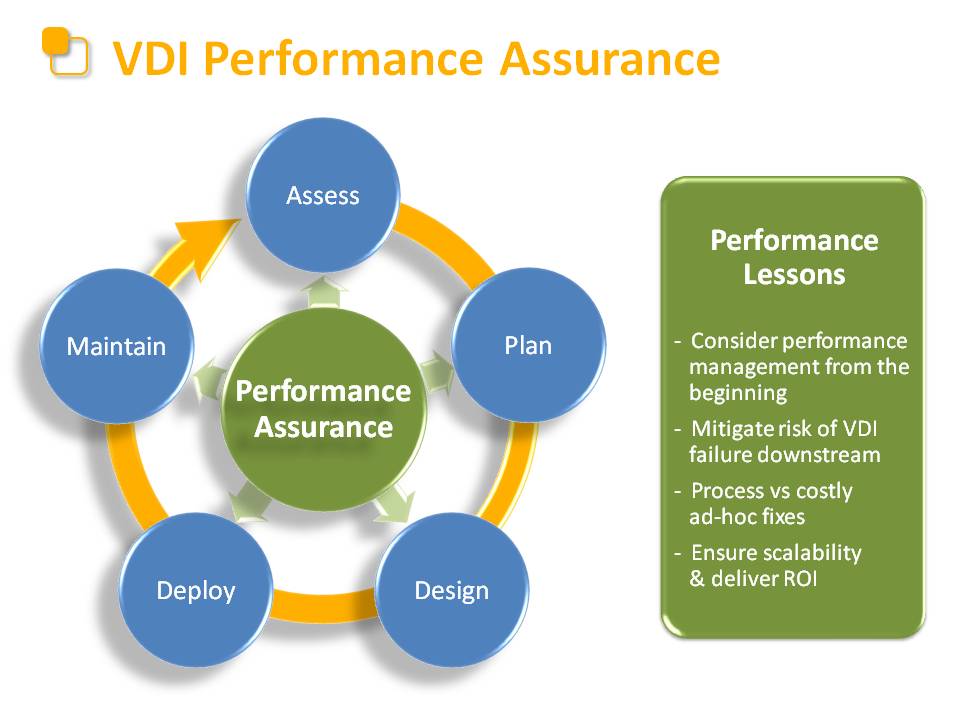Very often, when an enterprise starts on the virtual desktop journey, the focus is on the user desktop. This is only natural – after all, it is the desktop that is moving – from being on a physical system to a virtual machine.
Therefore, once a decision to try out VDI is made, the primary focus is to benchmark the performance of physical desktops, model their usage, predict the virtualized user experience and based on the results, determine which desktops can be virtualized and which can’t. This is what many people refer to as “VDI assessment”.
One of the fundamental changes with VDI is that the desktops no longer have dedicated resources. They share the resources of the physical machine on which they are hosted and they may even be using a common storage subsystem.

While resource sharing provides several benefits, it also introduces new complications. A single malfunctioning desktop can take so much resources that it impacts the performance of all the other desktops. Whereas in the physical world, the impact of a failure or a slowdown was minimal (if a physical desktop failed, it would impact only one user), the impact of failure or slowdown in the virtual world is much more severe (one failure can impact hundreds of desktops). Therefore, even in the VDI assessment phase, it is important to take performance considerations into account.
In fact, performance has to be considered at every stage of the VDI lifecycle because it is fundamental to the success or failure of the VDI rollout. The new types of inter-desktop dependencies that exist in VDI have to be accounted for at every stage.
For example, in many of the early VDI deployments, administrators found that when they just migrated the physical desktops to VDI, backups or antivirus software became a problem. These software components were scheduled to run at the same time on all the desktops. When the desktops were physical, it didn’t matter, because each desktop had dedicated hardware. With VDI, the synchronized demand for resources from all the desktops severely impacted the performance of the virtual desktops. This was not something that was anticipated because the focus of most designs and plans was on the individual desktops.
In part 2 of this article, we will take a closer look at the parallels to server virtualization and what lessons we can learn for VDI.
eG Enterprise is an Observability solution for Modern IT. Monitor digital workspaces,
web applications, SaaS services, cloud and containers from a single pane of glass.




